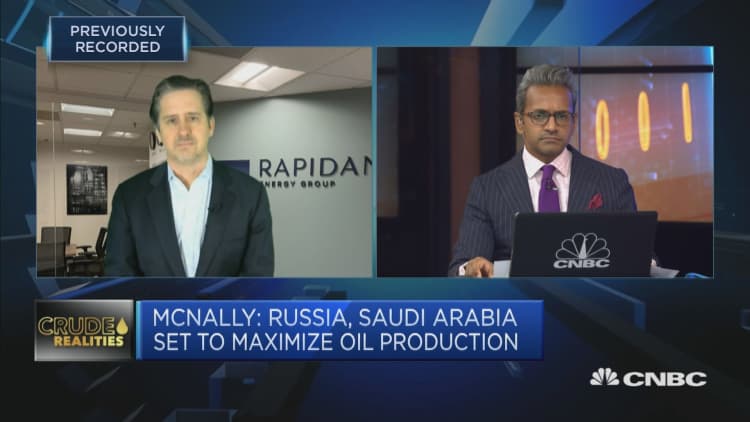Two of the world's largest oil producers — Saudi Arabia and Russia — are set to increase production dramatically this month, after an agreement between OPEC and its allies to lower output expired at the end of March.
OPEC+ countries have teamed up to reduce their supply to the market since 2017, but failed to reach a deal last month.
Riyadh and Moscow then separately announced that they would flood the market with oil in April. That, against the backdrop of demand destruction due to the global coronavirus pandemic, has crushed oil prices. Crude oil benchmarks plunged to 18-year lows on Tuesday and have fallen more than 60% since the beginning of the year.
Here's how the oil price war unfolded.
Slide in oil demand
As early as mid-January, the future of oil demand came into question as the coronavirus spread, prompting factory closures and trip cancellations in China. These concerns have now intensified — many countries have gone into lockdowns and air travel has largely been halted in a bid to prevent infections.
Both OPEC and the U.S. Energy Information Administration (EIA) slashed their oil demand outlooks in March reports.
The Middle-East dominated alliance now sees demand growing by 60,000 barrels per day, while the EIA expects a rise of 400,000 bpd. They had initially expected growth of more than 1 million bpd in January.
As coronavirus fears arose, there was talk of an emergency meeting between OPEC and its allies to stabilize the market, but only the Joint Technical Committee met in February. While it officially recommended extending voluntary production cuts to the end of the year, reports said OPEC kingpin Saudi Arabia was considering cuts by 1 million bpd.
Saudi Arabia-Russia standoff
Prices plummeted after Russia declined to approve OPEC's proposal to cut production by an additional 1.5 million bpd, on top of the 1.7 million bpd agreed upon in December, excluding voluntary reductions.
Saudi Arabia responded by offering discounts on its oil and announcing that it would increase production, leading both WTI and Brent to their worst days since 1991 on March 9, which in turn caused a sell-off in global markets.
Analysts said Russia may have taken the action in order to target the U.S. "It's Saudi Arabia against Russia, and Russia against the United States. I think that's what it is," vice-chairman of IHS Markit Dan Yergin said at the time.
Competing for market share
U.S. shale oil has been a wild card in the energy market, with production surpassing both Riyadh and Moscow in 2018. Its market share has continued to climb and stood at around 15% as of November 2019, according to CNBC calculations based on EIA data.
But that top position has been threatened as American producers struggle to break-even as a result of the price war.
"If we continue where we are with these low prices, we'll see a big decline in U.S. oil production," Yergin said this week. "It will no longer be number one."
Increasing output
Saudi Arabia could potentially claim the top spot. State-owned Saudi Aramco said in a statement last month that it will provide 12.3 million bpd of crude oil in April. That's nearly 2 million bpd more than an estimate for March, according to Refinitiv Eikon data.
Russia and the United Arab Emirates have also indicated that they could increase production, and other countries that have the capacity to pump more barrels are likely to do so, said Ravi Krishnaswamy, senior vice president of Frost & Sullivan's Asia Pacific industrial practice.
Russia's Energy Minister Alexander Novak said his country can increase its production by 200,000 bpd to 300,000 bpd in the short term, and 500,000 bpd in the longer term. Its output was around 11.3 million bpd in February.
The UAE said it would pump more than 4 million bpd, up nearly 1 million bpd from its March estimates.

Elevated production levels could last "until June at least" because that's when OPEC+ is supposed to meet next, Krishnaswamy said, while acknowledging there are "no signs" so far that the meeting will take place. Washington-Moscow talks or cooperation may not produce results either, he added.
When asked what it would take to bring the parties back to the negotiating table, Krishnaswamy said demand, production and storage capacity are three factors to watch.
For now, however, he predicts that prices will continue to slide.
"There is a very good chance that the oil price will still fall ... even to levels of $10 (for WTI)," he said, adding that "nobody knows" how low it could go. "It's just going to fall further because the reality is it can fall further. $15, $13, $10 ... I think that's kind of the number we might be looking at."
— CNBC's Pippa Stevens and Patti Domm contributed to this report.


